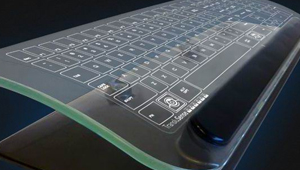Glass for the Class
Mr. Samir Al Baghdadi
Technology has swept the world and left no stone or book unturned. While smartphones, cell phones, and tablets have been all of the rave, the world and classroom is set to change with the translucent Google Glass. Set to be released in 2014, Google Glass combines everything you have come to love about smartphone technology through a noninvasive heads-up display.
How Does Google Glass Work?
Google Glass will allow students and teachers to share information and interact in ways never imagined. To the naked eye, the spectacular spectacles known as Google Glass may appear to be the newest style of aviator sunglasses. However, upon closer examination Google Glass will instantly reveal itself to be much more than a visionary aid. An interactive lens offering a smartphone-like heads-up display will bolster the spectacular spectacles. Google Glass will have Bluetooth functionality and Wi-Fi connectivity, which will allow users to easily access the information highway using plain language.
Google Glass will be powered by the Android mobile operating system, which is the world’s most popular mobile operating system. In addition, Google Glass is expected to be compatible with the Apple iOS. With endless possibilities, the speculation behind the spectacular spectacles has already unleashed a vast array of its uses. While it’s unclear exactly how Google Glass will be used, it’s transparent these responsive reticules will change the way the world learns.
Changing the Way the World Views Education
One of the key elements of Google Glass is the use of augmented reality. Augmented reality refers to computer generated video, sound, and graphics of the real world in real-time to a present a bolstered reality. Augmented reality (AR) is an enhanced view of the real world with technology adding a supplemental layer of information over existing objects. Through the augmented reality of Google Glass, the classroom will never look the same.
It’s important you don’t get augmented reality confused with virtual reality (VR). VR is a computer-simulated environment, such as in video games. On the other hand, augmented reality presents the real world in real-time and uses exact semantic context, such as the live scores of a sporting event on TV. With AR, the real world becomes an interactive feature using all of the information within it. At the same time, the information within the world becomes digitally manipulable. Supplemental information about the real world can easily be overlaid on objects, which transforms any environment into an interactive true learning experience. As you could imagine, the AR feature of Google Glass will change the way the world views education. A few of the most prominent applications are explained below.
- Field trips will be catapulted to new heights with augmented reality. Different artifacts and landmarks can instantly show interesting figures and facts relevant to the object.
- History will no longer be a boring lecture of days of yore. Instead, history teachers will be able to take the class on trips through time to not only learn about history but experience the events like never before.
- Science can become much more interactive by allowing students to capture everyday life events in videos, photos, and audio. Even better, students can share their scientific explorations with their fellow classmates. For example, apps like Google SkyMap already allow users to identify stars and constellations by using the camera on their phone.
Augmented reality will make education a much more personal experience. As a result, students will be more enthusiastic about learning, which will make each lesson a much more memorable occasion.
Additional Ways the Glass Will Augment the Class
Augmented reality is simply the tip of the iceberg of the capabilities of Google Glass. In addition to the supplemental information provided by AR, Google Glass will also be used to enhance the classroom in the following ways.
- Remote teaching will become a significant factor in the classroom. With the real-time streaming capabilities of Google Glass’, teachers can deliver lessons to students from one country to students in a totally different location.
- With facial recognition apps, teachers will be able to focus more on creating lucrative and engaging material verses trying to remember the names of all of their students. Additionally, these types of apps will allow teachers to quickly access a student’s test scores, which can make all directives more targeted toward the individual.
- Teachers will be able to collaborate with teachers from various locations to borrow different and more effective techniques and methods.
Search
News

رئيس جامعة الناصر الاستاذ الدكتور عبدالله حسين طاهش يقوم بزيارة تفقدية للجان والقاعات الامتحانية الخاصة بكلية الهندسة وعلوم الحاسوب الاثنين 24 فبراير 2025
قام رئيس الجامعة الاستاذ الدكتور عبدالله حسين ط...
جامعة الناصر تنظم ورشة حول التهيئة الرمضانية لمنتسبيها
نظمت جامعة الناصر صباح اليوم الأثنين 25 شعبان 1...
اختتام المؤتمر العلمي الأول للجامعات اليمنية في صنعاء
اختتم اليوم في العاصمة صنعاء، أعمال المؤتمر الع...
لليوم الثاني على التوالي، استمرار أعمال ونقاشات المؤتمر العلمي الأول للجامعات اليمنية.
تستمر في العاصمة صنعاء لليوم الثاني على التوالي...
بمشاركة جامعة الناصر وبحضور رسمي رفيع انطلاق المؤتمر العلمي الأول في صنعاء
صنعاء 20 شعبان 1446 هجرية الموافق 18 فبراير 202...

